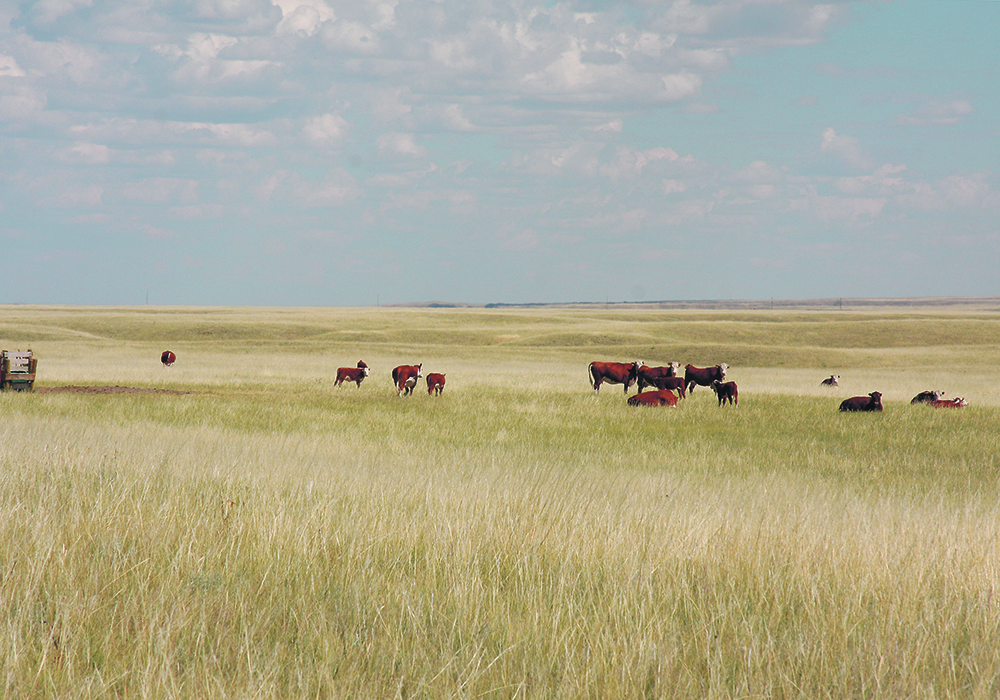Scientists at the federal research centre in Swift Current, Sask., are looking for native plants that can survive an arid climate
The shortgrass prairie of southeastern Alberta and southwestern Saskatchewan can be a tough environment, but researchers at the federal agriculture research centre in Swift Current, Sask., are looking at how native plants can benefit the cattle industry.
Sean Asselin, a perennial forage breeder at the centre, said they are working to develop a seed program to help propagate use of native forage plants that have a track record of surviving in the arid climate of the region.
“Part of the evolutionary strategy of some of these wild species is that they are playing the long game,” said Asselin.
Read Also

Farming Smarter receives financial boost from Alberta government for potato research
Farming Smarter near Lethbridge got a boost to its research equipment, thanks to the Alberta government’s increase in funding for research associations.
He said the program is focused on biodiversity and risk.
“We know that having different plants on the landscape contributes different services to the environment,” he said of the biodiversity side of the equation. “This might be nitrogen fixation by native legumes, this might be different pollination services by different forbs, this could be fixing carbon into the soil by deep roots of native grasses.”
Using native prairie plants that can withstand environmental stresses, temperature fluctuations and wildfires can reduce risks while creating a self-sustaining system, said Asselin.
But developing a method to collect seeds from native plants is no easy feat.
The Swift Current research centre is experimenting with different species of prairie clover and winterfat.
Issues with seed production can increase costs while the nature of the plants themselves, such as their rate of growth, can also make repopulation difficult.
“A lot of our native plant species, legumes in particular, have issues with seed dormancy,” said Asselin. “These are wild materials that have all these different mechanisms to persist in the environment but they don’t have the pressure to all emerge at once.”
The focus of the research is finding the vigour, establishment and seed production traits, which can then be used to help propagate native species.
While the primary purpose of the research is for forage production for livestock, Asselin said there may be applications for oil- and gas-site reclamation.
The challenge is giving native seeds the time they need to become established before weeds.
“It’s a tricky process. One seed source doesn’t necessarily have all the characteristics that you need to meet the challenges,” he said. “It’s a complex system that changes over time. You have your primary species coming in and there is succession over time when you’re trying to reclaim a habitat.”
Asselin said ensuring native prairie remains viable will help keep the cattle industry going without costly inputs.
While Alberta and Saskatchewan have been able to maintain a portion of their native grasslands despite pressure from extensive grain production, Manitoba has lost most of its native range.
“Maintaining that native prairie is really important for the services it provides to the environment but also the fact it is a low-input production system that’s evolved to be managed with grazing,” said Asselin.
While wild bison may no longer roam the Prairies, Asselin said livestock continue to help maintain the ecosystem.
Maintaining these systems in light of climate change and reducing potential risks to native prairie is the primary goal of the research, added Asselin.
“They’ve been here for hundreds of thousands of years so when we have periodic changes or shifts in climate — dry cycles, wet cycles — these species are adapted for those conditions.” he said.


















